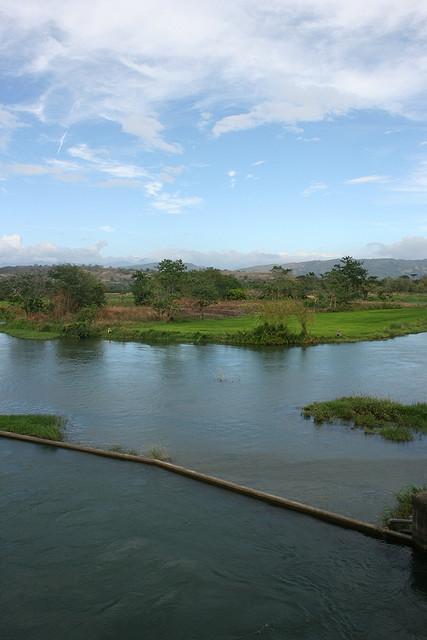
Pampanga River is the second largest river in the island of Luzon, next to Cagayan River, and the third largest river in the Philippines. Located in the Central Luzon region, the river traverses the provinces of Pampanga, Nueva Ecija, Bulacan, Tarlac and Quezon.
Its headwaters are located at the Sierra Madre and run a south and southwesterly course for about 260 kilometers until it drains into Manila Bay. The river's basin covers an area of 10,540 km², including the allied basin of Guagua River. The basin is drained through the Pampanga River and via the Labangan Channel into the Manila Bay.
Tributaries of the River
The River’s main tributaries are Peñaranda and the Coronel-Santor Rivers on the eastern side of the basin and the Rio Chico River from the northwest side. The Angat River joins the Pampanga River at Calumpit, Bulacan via the Bagbag River. Mount Arayat (elevation: 1,026) stands in the middle of the basin. Southeast of Mount Arayat and the Pampanga River is the Candaba Swamp, covering an area of some 250 km². absorbing most of the flood flows from the western slopes of a portion of the Sierra Madre and the overflowing of the Pampanga River via the Cabiao Floodway. This area is submerged during the rainy season but is relatively dry during summer.
Economic Importance
At the higher sections of the basin, dams especially the Pantabangan Dam located in the Pantabangan River (one of the rivers in the Pampanga River basin) in Pantabangan, Nueva Ecija provides irrigation for the farms in the province of Nueva Ecija and Tarlac.
At the lower sections of the basin, where the Pampanga delta lies, the Pampanga River system divides into small branches, crisscrossed with fishponds to form a network of sluggish, tidal flats and canals, which eventually find their way to Manila Bay.
With the anticipated completion of the Pampanga Delta Project (DPWH), it is expected that flood flows at the lower section of the Pampanga River will recede at a much faster rate than before.










